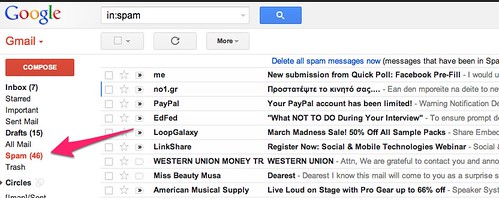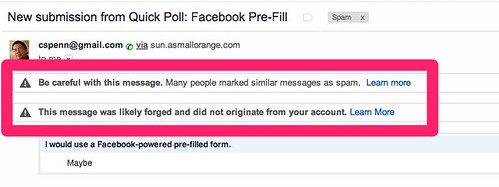If you’ve been using single opt-ins for a while, the idea of double opt-ins may seem a little daunting (or even unnecessary). You’re effectively doubling the number of steps a user takes before they are added to your email lists.
And this can be a little scary for most email marketers whose KPIs are growth driven. There’s no room for thinking about some of the technical aspects behind email marketing like deliverability and sender reputation.
That’s why today, we’re explaining how cultivating quality over quantity can save you more time and energy in the long run. We believe adding that extra step and having a healthy list of engaged subscribers trumps unvalidated emails every time.
So, without further ado, let’s double down on the practice of double opt-in.
TABLE OF CONTENT
The double opt-in process
Create self-cleaning lists
Drive higher engagement
Bolster deliverability and IP reputation
Generate marketing qualified leads
Future proof from data policy
Start the onboarding experience
Enable double opt-in
Write the confirmation email
Set up the confirmation process
The arty one
The illustrated one
The welcome message
06
Create double opt-in forms with NetGains MailWizz
What is double opt-in?
Double opt-in is the process of obtaining explicit consent from a user to receive emails. An automated confirmation email is immediately sent after a someone signs up to an email list. This confirmation message typically includes a verification link or code that the user must click on or enter to confirm their email subscription. This ensures the user is real and has willingly agreed to receive communication from the sender.
But how does this differ from other methods? When users subscribe to your email marketing program via a registration form, you have a choice.
You can welcome them and start sending them newsletters right away –which is what we call single opt in –
You can ask your contacts to confirm they want to receive your email communications by sending them an email with a confirmation link.
It is this latter possibility that we call the double opt-in. It’s double because there is a first authorization at the time of registration and a second one with the confirmation email.
Double opt-in allows you to be sure:
That the email address is valid with no typos
That the owner of the email address is really the person who subscribed to your mailing list
Your new contact is really interested in receiving your communications and is more likely to engage with your content and less likely to unsubscribe
Below is a perfect example of a double opt-in registration in action. Once you’ve filled in the form, Skyscanner follows up with a confirmation email, asking you to click on a link to confirm that you want to receive their price alerts. In this email, they clearly specify what you can expect from their email communications and how to opt out.
Skyscanner’s Price Alert form allows you to check a box to subscribe to their email communications. Then, Skyscanner sends a confirmation email to weed out bots and incorrect emails.
In summary, the double opt-in process allows you to obtain a more qualitative and proactive list of subscribers who are really looking forward to your content. Who could ask for more?
The double opt-in process
Unlike a single opt-in process which requires only one or two steps, the double sign-up process contains double the number of steps to complete for the user.
The double signup stages are:
Signup form: User fills out a form with their personal information, such as name and email address, on a company's website or landing page.
(Optional) Thank you page: thanking the user for handing over their information and telling them to check their inbox for a confirmation link.
Confirmation email: A short email from the company that includes a link to confirm their subscription (examples below).
Confirmation page: The page users land on should inform the user that they have successfully been added to the list after clicking the confirmation email link.
As you can see there are several moving parts to this signup process which can be off-putting for some marketers. However, we’ll try to convince you it’s all worthwhile by covering the advantages of the double opt-in.
Single vs double opt-in
Tread carefully – choosing between single and double opt-in has significant repercussions for your email program. But there’s no right and wrong here. However, you need to determine which is right for the current state of your organization and the customers you’re dealing with.
While weighing up the pros and cons of each signup process, think about how each choice will affect the user experience, your relationship with inbox providers, and overall engagement metrics.
Pros and cons of single opt-in
Pros | Cons |
|---|---|
|
|
|
|
|
|
Pros and cons of double opt-in
Pros | Cons |
|---|---|
|
|
|
|
|
|
|
|
|
Hopefully by now the strengths and weaknesses of both strategies are clear so you can make a conceited decision. If you go for the double opt-in, we have some great examples of companies that have pulled it off successfully.
By implementing double opt-in and following up with a welcome email or sequence, you can establish trust, build credibility, and set clear expectations with your subscribers, ultimately leading to higher open rates, click-through rates, and conversions.
The advantages of double opt-in
Yes, we know there’s more work involved, but the payoff for using double opt-in is equally attractive. Let’s go through the many advantages.
Create self-cleaning lists
Your lists are constantly getting dirtied by incorrectly typed addresses, changing job roles, or just plain trickery. This is why list cleaning is one of the most fundamental best practices of email marketing. It ensures your stats are accurate and keeps you in the good books of mailbox providers like Gmail and Outlook.
Drive higher engagement
By asking users to verify their email, you have already generated the first interaction with your subscriber. This is a positive signal to the mailbox providers and a great start for your sender reputation.
Plus, when they agree to receive your newsletter, they have agreed to it twice. Thus, the subscriber is less likely to classify your emails as spam further down the road.
So, on the surface, you may appear to have fewer total subscribers in your database, but your engagement levels will be higher and more accurate without an unengaged portion. This makes your reporting dashboard and decision making more accurate.
Using double opt-in means you avoid sending your newsletter to an incorrectly typed email address and prevents you from having to clean up quite as often. Although, we still recommend cleaning your list every few months to keep engagement as high as possible

 "Be
careful with this message. The email contains a suspicious link that
was used to steal personal information. Unless you trust the sender,
don't click links or reply with personal information"
"Be
careful with this message. The email contains a suspicious link that
was used to steal personal information. Unless you trust the sender,
don't click links or reply with personal information"


